We always see pictures of Neil Armstrong in his Apollo spacesuit, training to walk on the Moon, walking on it. But Armstrong was so much more than an astronaut. In fact, he often said that he was first and foremost an engineer and pilot. Which is, of course, true. In middle school Armstrong decided he wanted to be an aeronautical engineer; he learned to fly because, well, how could he design good airplanes if he didn’t know how they actually behaved in flight?Neil Armstrong’s first airplane ride was with his father, Stephen, at the local airport near Warren, Ohio. The younger Armstrong was hooked and began devouring books and magazines about aviation. He also built model airplanes. He was most interested in how the different designs flew, something he observed as he threw models out from his bedroom window. But he wasn’t always thinking about flight dynamics; sometimes he just lit the models on fire and threw them to watch the burning mass fall from the sky.Armstrong learned to fly before he could drive, at the age of 16, just as aeronautics was entering the space age. The advent of jet planes meant new records to break and engineering challenges to master. He married engineering and flying in his early career as an X-15 pilot and working as a consultant on the X-20 or Dyna-Soar. He brought his experience with simulators to NASA with him when he joined the astronaut corps in 1962, and was heavily involved in designing the simulators that taught astronauts how to fly in space. He designed and built a barebones training vehicle that taught astronauts to fly a capsule to a runway landing in the short lived paraglider program, and played a part in building the Lunar Landing Research Vehicle, the trainer the helped teach astronauts how to land on the Moon. Even in space, he piloted the Gemini 8 capsule out of a nearly fatal spin to save his and crewmate Dave Scott’s life; later they bonded over an airsickness bag after splashdown.As commander of Apollo 11, NASA’s official bio mentions, almost as an aside, he “gained the distinction of being the first man to land a craft on the Moon and the first man to step on its surface.” But his quest to understand and break the rules of innovative spaceflight extended beyond that small step.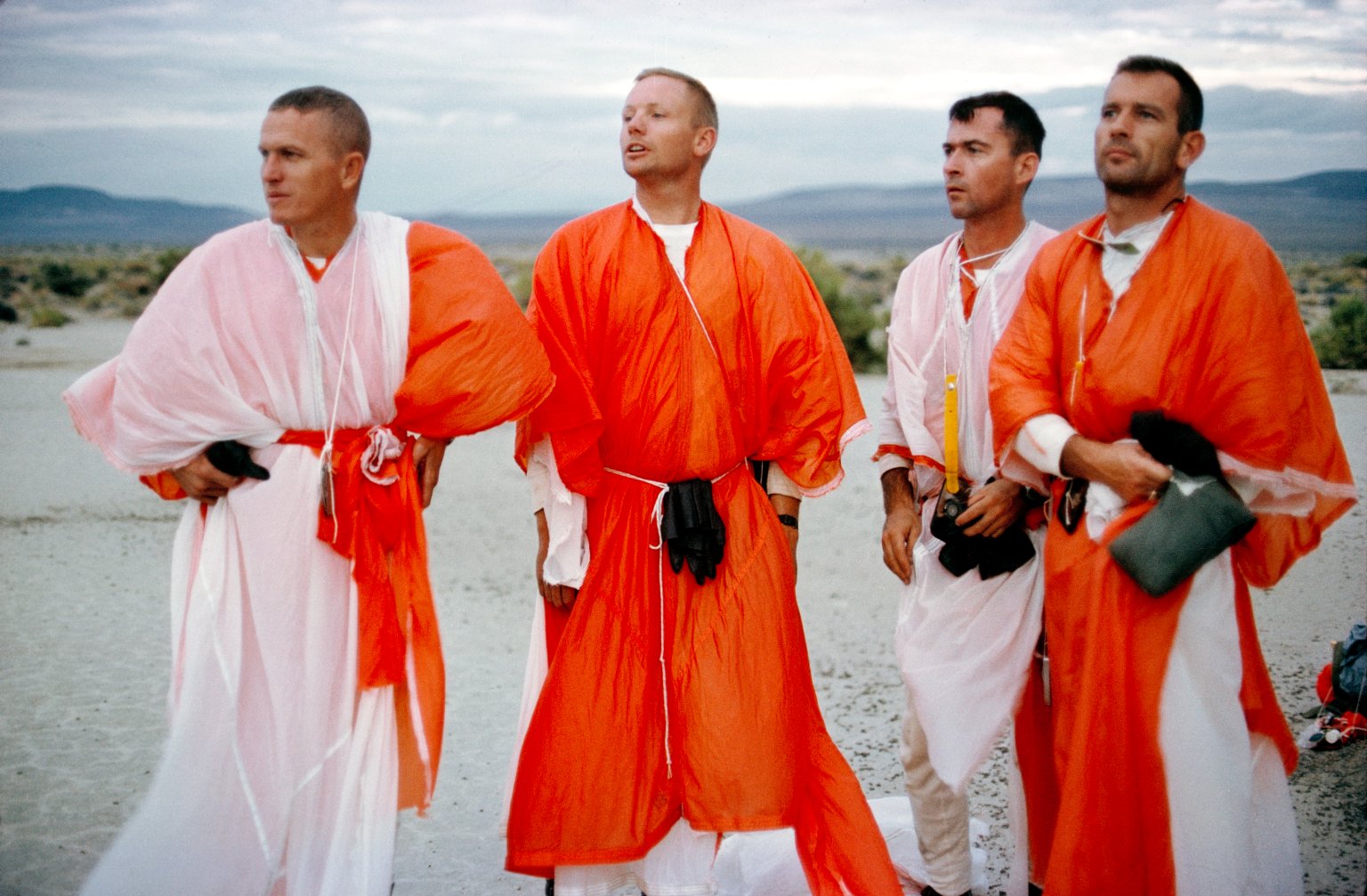
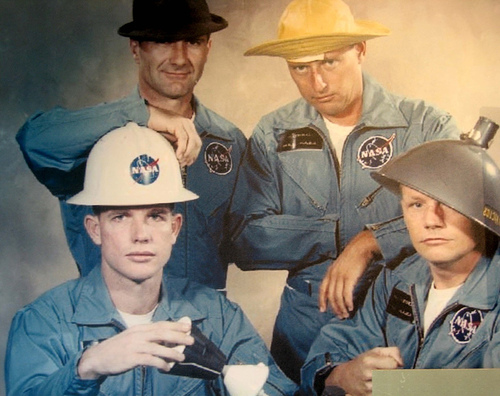
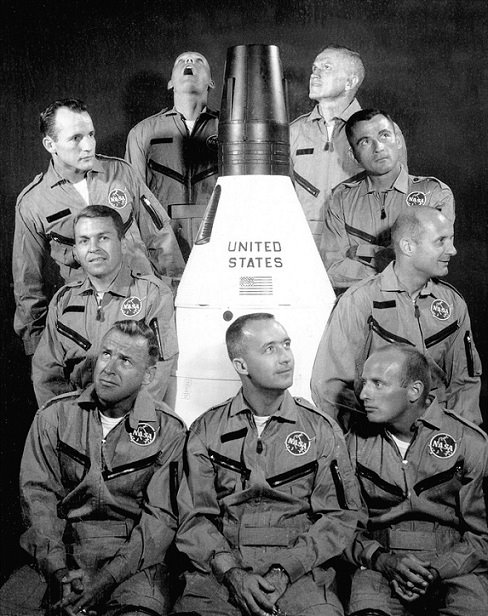
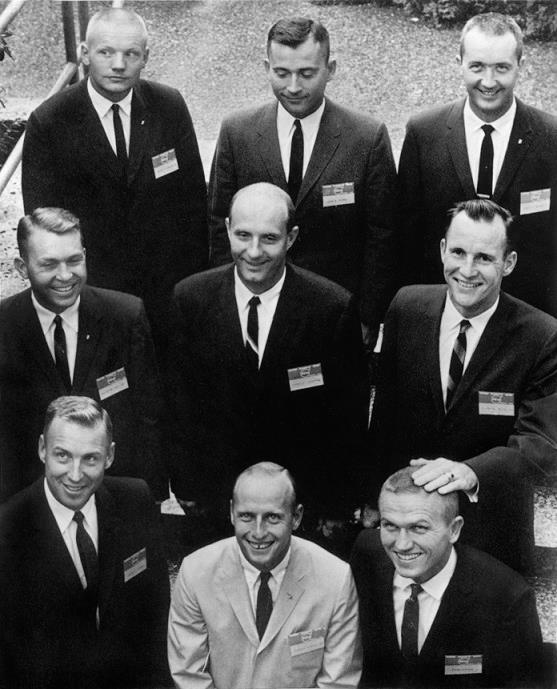
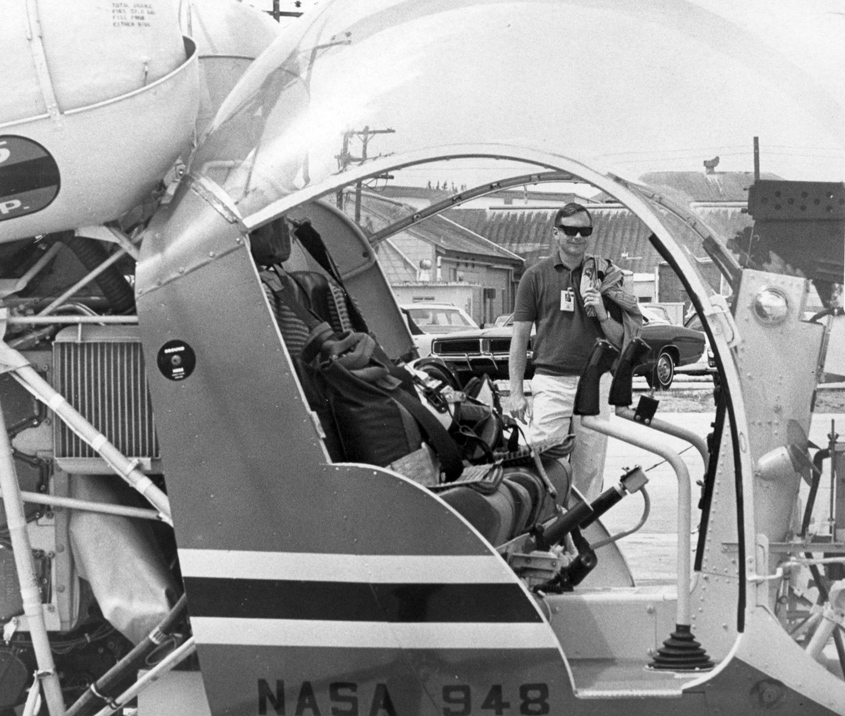
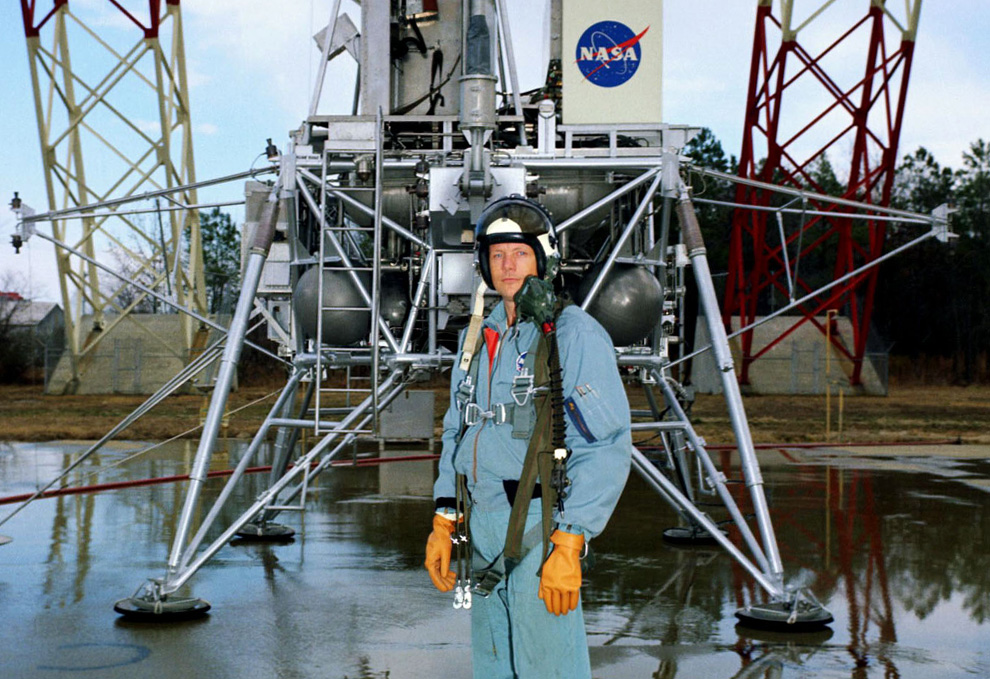
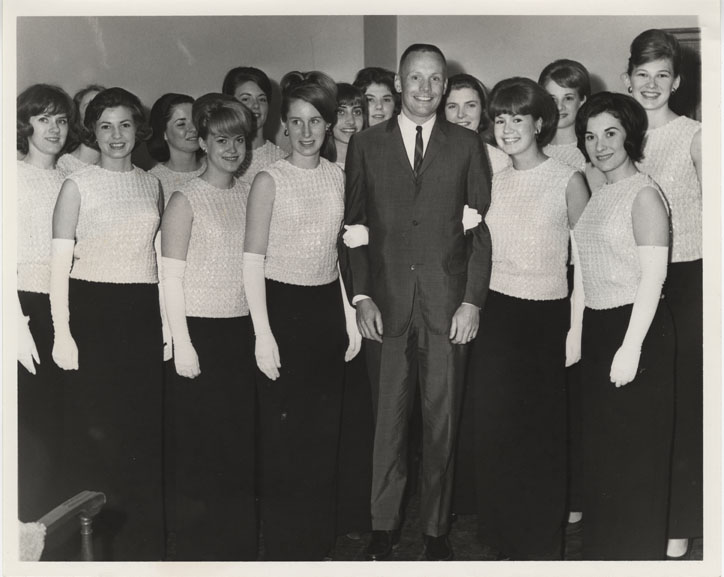
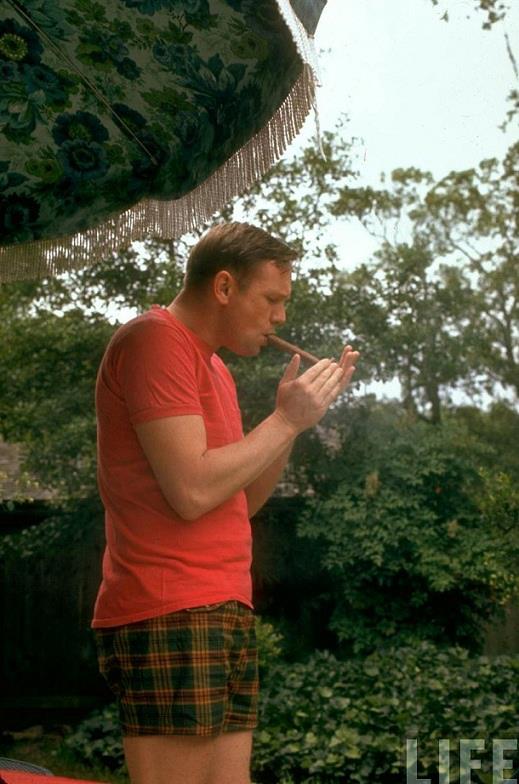
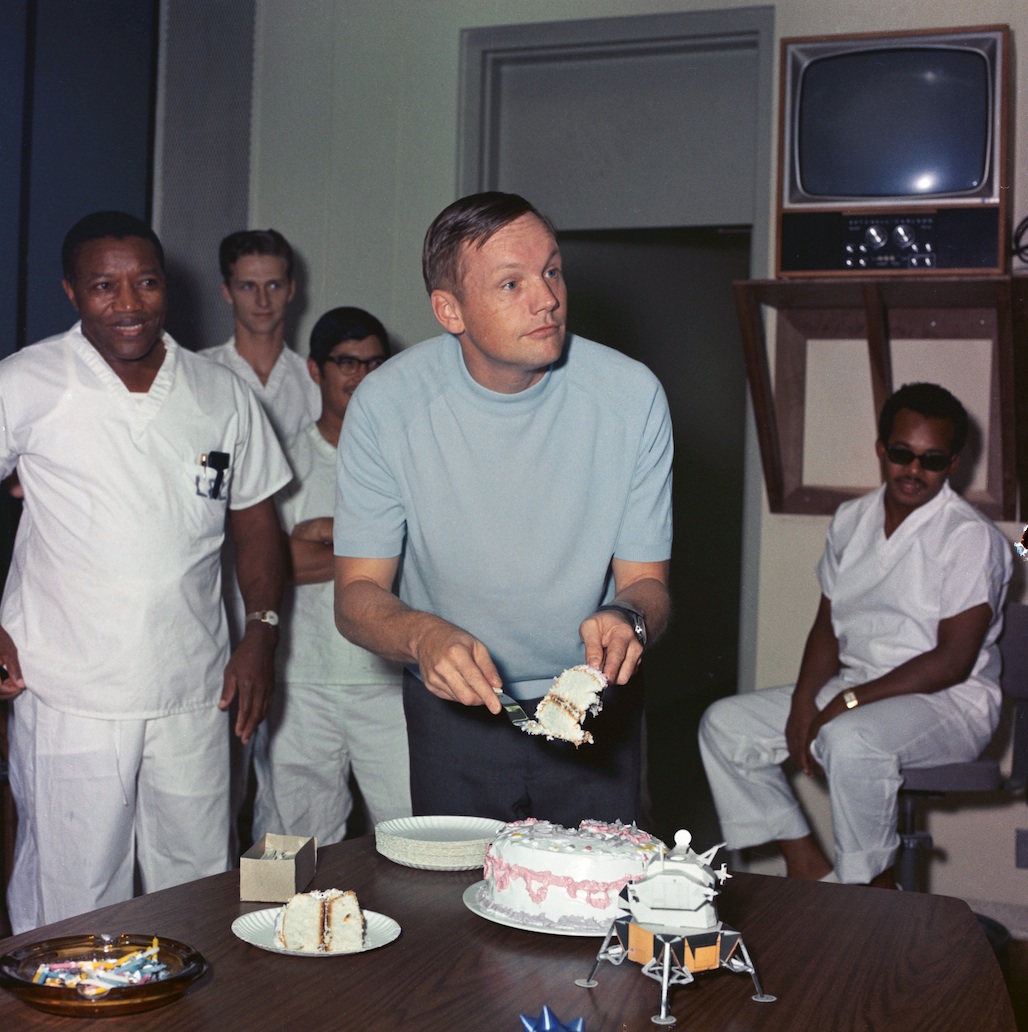
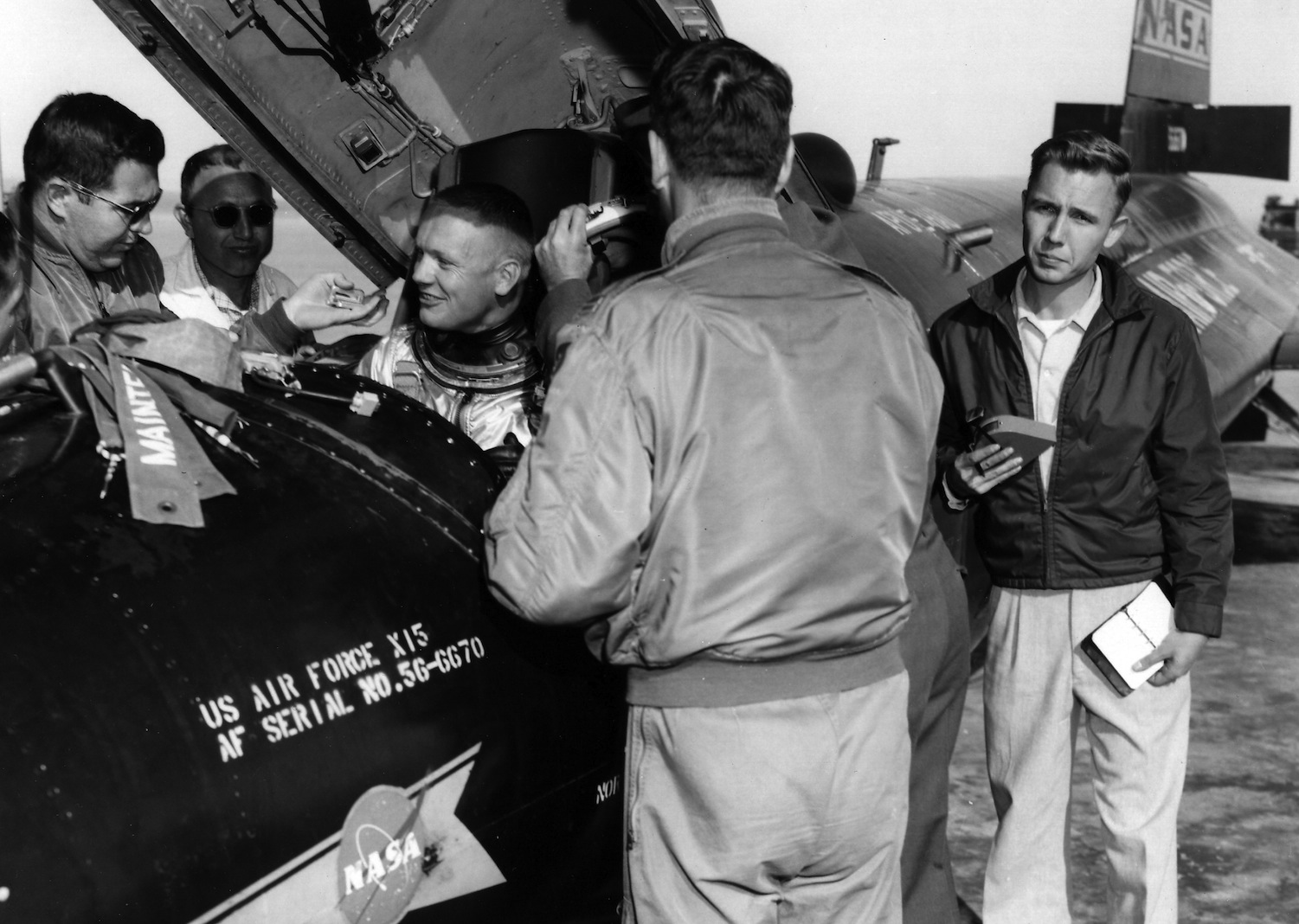
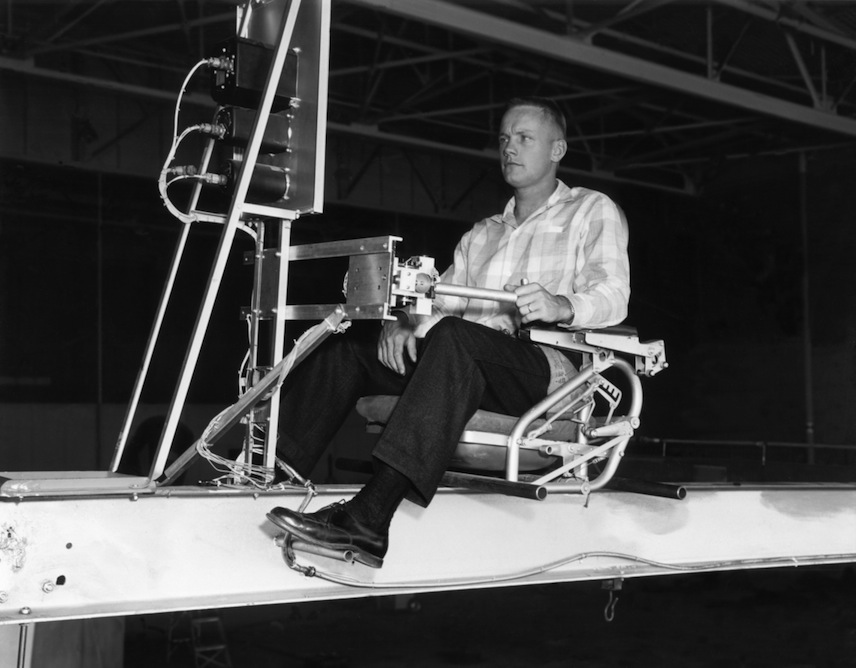
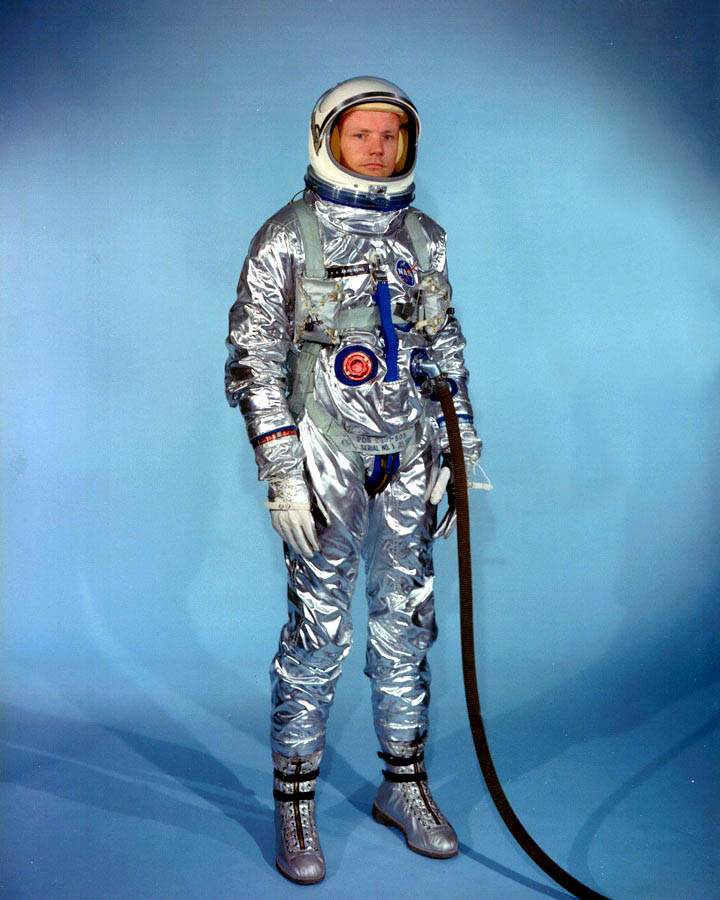

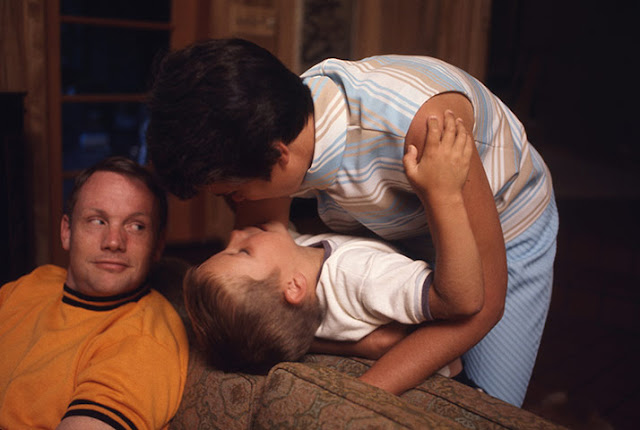
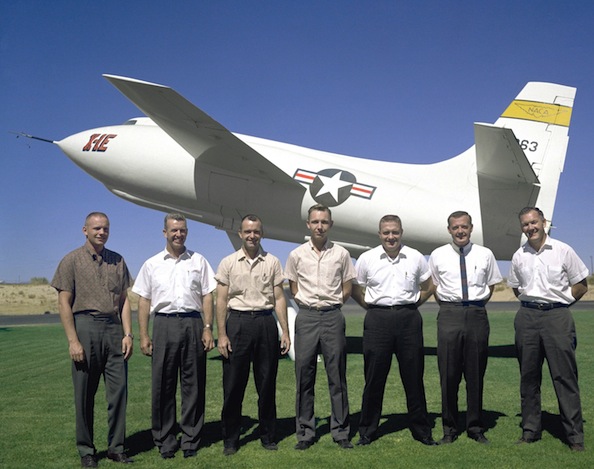
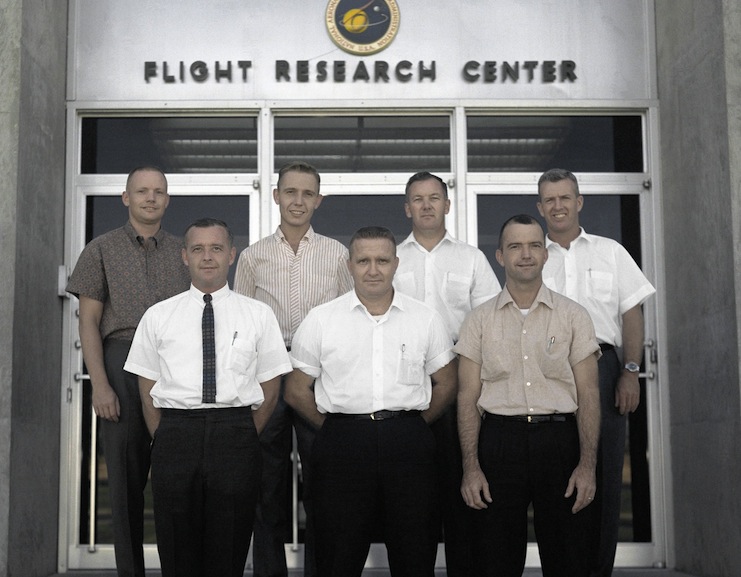
Advertisement
Advertisement
Every astronaut had to go through survival training. Here are John Glenn and Neil Armstrong, one already a legend, the other a few years away from legend status, in the jungle.

They learned how to fashion clothes and tents out of the spacecraft’s parachutes in case of a land landing. Here’s Frank Borman, Armstrong, John Young, and Deke Slayton doing some desert survival training.

Armstrong, sporting the funnel, and Dave Scott in the white hardhat were the prime crew for Gemini 8. A stuck thruster sent the spacecraft spinning wildly in orbit. It was Armstrong’s expert abilities at the controls that saved the mission and the crew. Dick Gordon (fedora) and Pete Conrad (rain hat) were the mission’s backup crew.

Armstrong joined NASA’s astronaut corps in 1962. He was one of the “New Nine,” already looking skyward in this group shot with a Gemini capsule.

A photo of the “New Nine” crew shows Armstrong looking unamused by his new colleagues’ tomfoolery.

Not only did Armstrong fly the Lunar Landing Research Vehicle, he helped design the prototype in 1962. Here he is, rocking shades during testing.

That same lunar landing training vehicle nearly killed him. During an earlier test flight, it lost control to directional thrusters, darted forward, and crashed. Armstrong ejected, avoiding the flames that subsequently engulfed the vehicle.

Advertisement
Armstrong returned to his alma mater, Purdue University, in 1966 after his Gemini 8 flight. Here he is with “The Purdettes”

And here he is, relaxing.

Armstrong was both on August 5, 1930. On his 39th birthday, he was still in quarantine after returning from the Moon. But that didn’t mean he didn’t get cake.

A smiling Armstrong after a flight in the X-15 aircraft. Working at Edwards Air Force base was Armstrong’s goal after graduating from Purdue University in June 1954. He got there and was assigned to the X-15 program by the end of the year.

When Armstrong was training to fly the X-15, simulators were on the simpler side. He tested reaction controls for the aircraft in shirtsleeves.

Neil looking bad-ass in his pre-Gemini spacesuit.

Neil’s wife Janet Shearon

At home with his family in Houston, a few weeks before Apollo 11.

